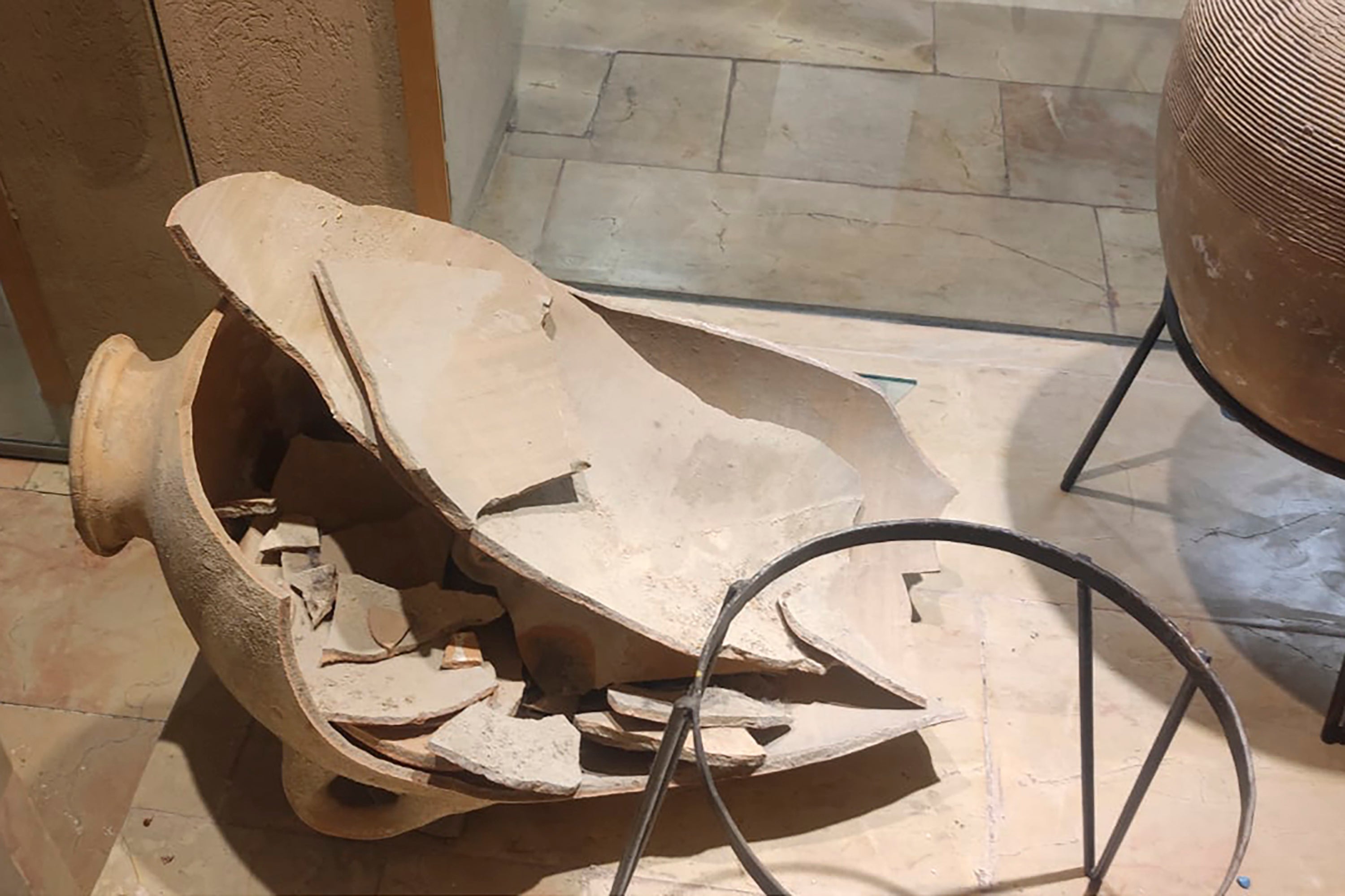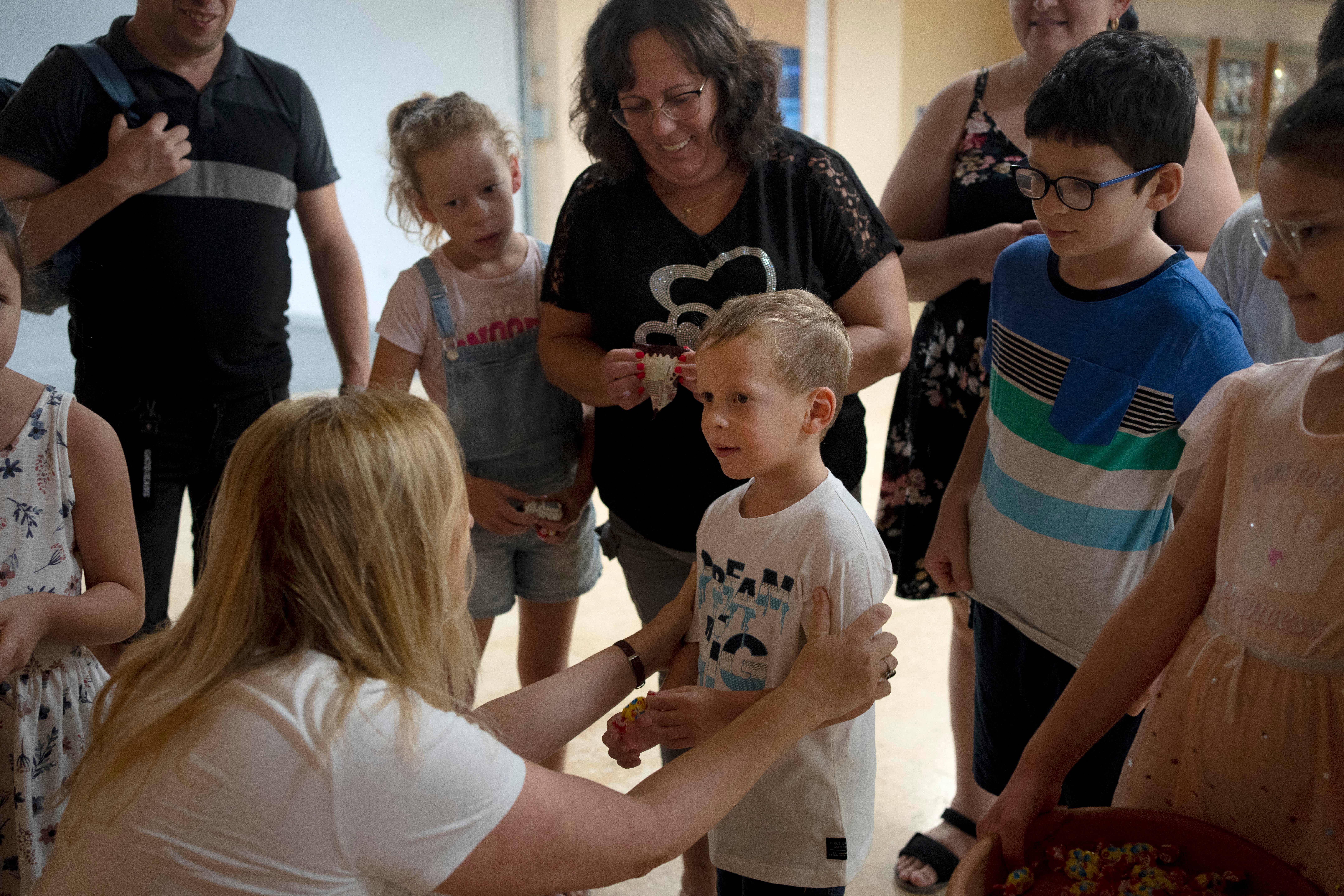Boy who broke 3,500-year-old artefact welcomed back to museum
Boy gifts museum a clay vase of his own after he accidentally broke the rare jar
A four-year-old boy who accidentally smashed a Bronze Age jar into pieces was welcomed back along with his family to the Hecht Museum in Israel.
The child and his family were visiting the museum at the University of Haifa earlier this month when the boy “pulled the jar slightly” out of curiosity, causing the 3,500-year-old jar to fall and shatter.
The artefact, from between 2200BC and 1500BC, had been displayed near the entrance without a protective barrier.

The museum, instead of taking action against Ariel Geller, said it was inviting the boy and his family for a guided tour to “sweeten” their previously bitter experience.
During their visit last Friday, the boy gifted the museum a clay vase of his own and was met with forgiving staff and curators.
“It was just a distraction of a second,” Anna Geller, a mother of three from the northern Israeli town of Nahariya, told the Associated Press. “And the next thing I know, it’s a very big boom boom behind me.”

The child’s father, Alex Geller, said he was “in shock” to see his son next to the broken artefact and at first thought it couldn’t be his child who caused such damage.
The child said he “just wanted to see what was inside”, his mother said.
Mr Geller went over to the security guards to let them know what had happened in the hope that it was a model and not a real artefact. The father even offered to pay for the damage.
“But they called and said it was insured, and after they checked the cameras and saw it wasn’t vandalism they invited us back for a make-up visit,” he said.
The jar was one of many artefacts exhibited out in the open, part of the Hecht Museum’s vision of letting visitors explore history without glass barriers.

The museum believes there is a “special charm” in displaying artefacts without barriers or glass walls to make archaeological findings more accessible to the public, Dr Inbal Rivlin, its general manager, earlier told The Independent.
The museum said it would not involve the police as the displayed items were broken unintentionally.
“The jar was accidentally damaged by a young child visiting the museum, and the response will be accordingly,” Dr Rivlin said.
The jar predates the time of biblical kings David and Solomon and is characteristic of the Canaan region on the Mediterranean coast, the manager said. The “impressive find” was intended for the storage and transportation of mostly wine and olive oil.
Experts are using 3D technology and high-resolution videos to restore the jar, which could be back on display as soon as next week.
During Friday’s tour, Ariel had the opportunity to experience restoration work firsthand. “He assembled and restored a small broken jar using a special restoration kit prepared by the museum. In a similar manner to the repairs currently underway on the ancient jar, this is exactly what professionals do,” the museum said on Facebook.
Roee Shafir, a restoration expert at the museum, said the repairs would be fairly simple as the pieces were from a single, complete jar.
Mr Shafir told the news agency that artefacts should remain accessible to the public, even if accidents happen because touching one can inspire a deeper interest in history and archaeology.
“I like that people touch. Don’t break, but to touch things, it’s important,” he said.
Join our commenting forum
Join thought-provoking conversations, follow other Independent readers and see their replies
Comments
Bookmark popover
Removed from bookmarks